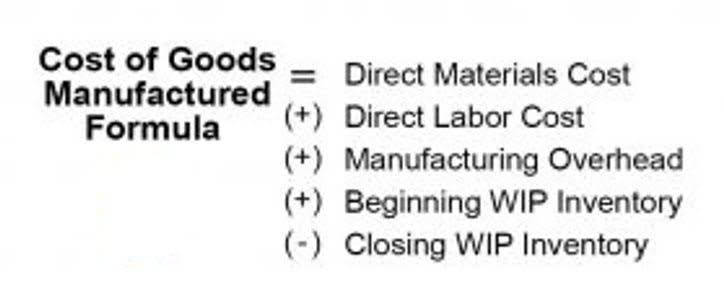
By doing so, the company moves these balances into permanent accounts on the balance sheet. These permanent accounts which of the following account groups are temporary accounts? show a company’s long-standing financials. Temporary accounts are closed at the end of every accounting period.
Taking the example above, total revenues of $20,000 minus total expenses of $5,000 gives a net income of $15,000 as reflected in the income summary. At the end of a financial period, all transactions from the revenue accounts and expense accounts are transferred to the income summary account as shown above. Revenue accounts are used to track the amount of money earned during a particular period of time. Money received for goods and services sold during the accounting period is recorded in these statements. The specific types of revenue accounts include sales accounts, profit statements, interest income accounts, and more.
Examples of Temporary Accounts
The expense accounts are temporary accounts that show everything that the company spent on its operations, including advertising and supplies, among other expenses. Revenue refers to the total amount of money earned by a company, and the account needs to be closed out at the end of the accounting year. To close the revenue account, the accountant creates a debit entry for the entire revenue balance. For example, if the total revenue recorded was $20,000, then a debit entry of the same amount should be written in the revenue account.
It seeks to display the actual earnings and expenses incurred by a company over a specific time. Ensuring temporary accounts start a new financial year with a zero balance should become second nature. Doing so allows for accurate tracking of the performance of a company.
Accounting made for beginners
For example, Company ZE recorded revenues of $300,000 in 2016 alone. Then, another $200,000 worth of revenues was seen in 2017, as well as $400,000 in 2018. If the temporary account was not closed, the total revenues seen would be $900,000. Expense accounts – expense accounts such as Cost of Sales, Salaries Expense, Rent Expense, Interest Expense, Delivery Expense, Utilities Expense, and all other expenses are temporary accounts. Purchases, Purchase Discounts, and Purchase Returns and Allowances (under periodic inventory method) are also temporary accounts. A temporary account must be shut down when an accounting period concludes.
A closing entry is a journal entry that is made at the end of an accounting period to transfer balances from a temporary account to a permanent account. A drawings account is otherwise known as a corporation’s dividend account, the amount of money to be distributed to its owners. It is not a temporary account, so it is not transferred to the income summary but to the capital account by making a credit of the amount in the latter.
The Income Summary Account
Transactions that affect a business’s annual profit or loss are compiled using these accounts. Over the course of a financial year, the balances in these accounts should rise; rarely do they fall. This account closes at the end of each accounting period and has no balance when a new period begins. Basically, to close a temporary account is to close all accounts under the category.
That way, the temporary account can start fresh at the beginning of every financial period which allows for easier tracking of financial activity for a specific period. For instance, say a company makes $40,000 in revenue during Year 1 and $50,000 in revenue during Year 2. Now, if the temporary account isn’t closed during Year 1, the revenue will be carried over to Year 2 and be recorded as $90,000. This data can lead to false conclusions about how the company performed that year, which can lead to poor decision making or potential problems with taxation. For example, if company XYZ generates $40,000 in revenue in one accounting period, the amount can be recorded for that period in a temporary account.
Journal Entries in Accounting (Explained) Practical Examples
The accountant is preparing the performance report for the period from 1 January 2023 to 31 March 2023 to see profit for the first quarter of the year. For the past 52 years, Harold Averkamp (CPA, MBA) hasworked as an accounting supervisor, manager, consultant, university instructor, and innovator in teaching accounting online. He is the sole author of all the materials on AccountingCoach.com. Get up and running with free payroll setup, and enjoy free expert support. Take your learning and productivity to the next level with our Premium Templates.
- Whether you’re just starting your business or you’re already well on your way, keeping organized financial records is a must.
- At the end of an accounting period, entries from all revenue and expense accounts are transferred into the income summary account.
- They are closed to prevent their balances from being mixed with those of the next period.
- Temporary accounts include all revenue accounts, expense accounts, and in the case of sole proprietorships and partnerships, drawing or withdrawal accounts.
- This data can lead to false conclusions about how the company performed that year, which can lead to poor decision making or potential problems with taxation.
- Temporary accounts can be maintained year-to-year, quarterly or monthly, depending on your accounting period.
To accomplish this, pass the journal entries, post them to the appropriate ledgers, and ensure that they balance, after which you pass the closing entries for all temporary accounts. In the example above, the income summary shows a net income of $33,550 from total revenues of $50,000 minus total expenses of $16,450. Temporary accounts are important for any accountant or business owner. They allow for transactions to be reflected correctly in the right financial period as long as they are accurately closed out at the end of every financial period.
Leave a Reply